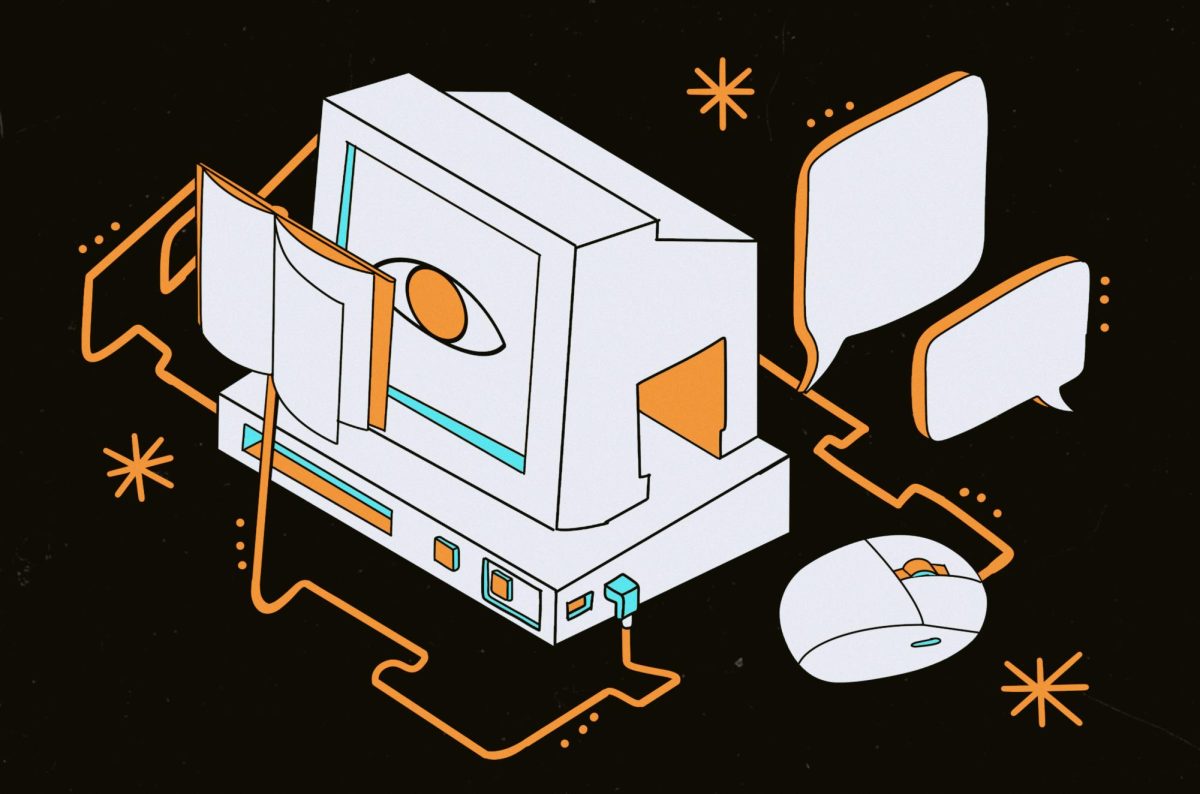According to 20th-century popular culture, conspiracists believed that computers would eventually plague society by watching our every move and monitoring our conversations. But in 2023, we’ve all remained relatively unscathed from the internet’s perceived evil.
A similar rhetoric has developed around artificial intelligence, with people once again predicting societal downfall. With the use of AI increasing in daily life, 52% of U.S. adults in 2023 were “more concerned than excited” about this change, according to Pew Research Center.
But, just like educators incorporated internet usage for learning and grading, professors should consider how AI can fill the gaps in our education system to better serve students with dyslexia.
“Things keep changing, and we keep adding new tools and ways to take advantage of the new tech,” said journalism professor Robert Quigley who teaches about AI usage in his lectures. “We don’t want to ignore (AI) like we did with the internet because I think (AI) is as big a change as that was.”
Dyslexia, a condition that creates a discrepancy between one’s intelligence and ability to speak, read and spell, affects 20% of students. Although dyslexic students are capable individuals, most of them take approximately double the time to fully read and understand content to accurately demonstrate their intelligence.
With textbook readings remaining an integral component of university learning, dyslexic students must overcome the hurdles of their disability by independently developing learning strategies.
“I’m a very slow reader because it takes me so long to comprehend information,” said Ryland Marshall, a human dimensions of organization sophomore who has dyslexia. “I did tutoring for so long that I was able to pick up strategies and get a lot faster, but now reading complex articles, I can definitely see my slowness come back up.”
Currently, UT Disability and Access accommodates students through the Kurzweil 3000 program, which is an audio narration software that can cost thousands of dollars per year. In addition to the Kurzweil subscription, out-of-pocket expenditures on audiobooks, tutors and psychological testing can make learning with dyslexia expensive for both students and administration.
“If I read something the first time, I will not get the meaning out of it,” Marshall said. “(My psychologist) told me to truly digest information, I need to read, see and hear it.”
By generating an audio transcript or narrating an article, AI programs represent a free, multimodal approach to presenting information that can directly cater to dyslexic students. For example, Narrativ, an AI text-to-speech program, partners with publications like The Harvard Crimson and The Daily Pennsylvanian to offer free narration services for news articles. Similarly, OpenAI shares ChatGPT’s engine with its free text-to-speech program, Whisper, raising the quality expected from other text-to-speech programs.
Popularizing the AI narration of online articles could further normalize multimedia teaching and allow professors to incorporate the learning style of dyslexic students into our university system.
If used responsibly, AI can better facilitate the integration of dyslexic students’ needs into mainstream teaching methods. While AI’s uncertain role in society may concern some individuals, it can also foster a culture of accessibility. Instead of fearing the possibilities the next time a revolutionary new AI program is released, professors should identify and implement it as a tool for communities with disabilities.
“Every technology has good and bad,” Quigley said. “We should be teaching good and bad, and we should be preparing people for the good and bad.”
Eades is a Plan II and journalism sophomore from Dallas, Texas.















